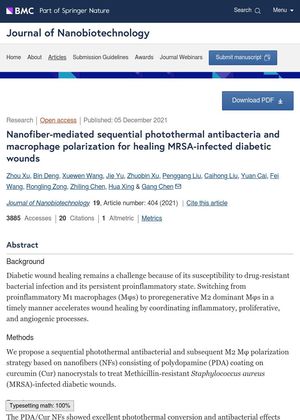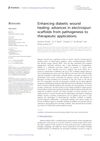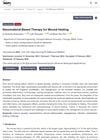Nanofiber-Mediated Sequential Photothermal Antibacteria and Macrophage Polarization for Healing MRSA-Infected Diabetic Wounds
December 2021
in “
Journal of Nanobiotechnology
”

TLDR The nanofibers effectively treated infected diabetic wounds by killing bacteria and aiding wound healing without toxicity.
The study developed nanofibers (NFs) made of polydopamine (PDA) coating on curcumin (Cur) nanocrystals to treat Methicillin-resistant Staphylococcus aureus (MRSA)-infected diabetic wounds. The NFs showed excellent photothermal conversion and antibacterial effects under laser irradiation, leading to the release of Cur, which promoted cell proliferation and reinforced the M2 macrophage phenotype. In vivo studies showed that these NFs inhibited MRSA infection and accelerated wound regeneration. They also enhanced collagen deposition, angiogenesis, and cell proliferation. The NFs also showed excellent biocompatibility with a hemolysis rate of only 5% at a concentration up to 1000 μg/mL, and no significant changes in body weight or detectable toxicity in major organs. Therefore, these NFs show significant potential as a promising therapeutic for healing infected diabetic wounds.


